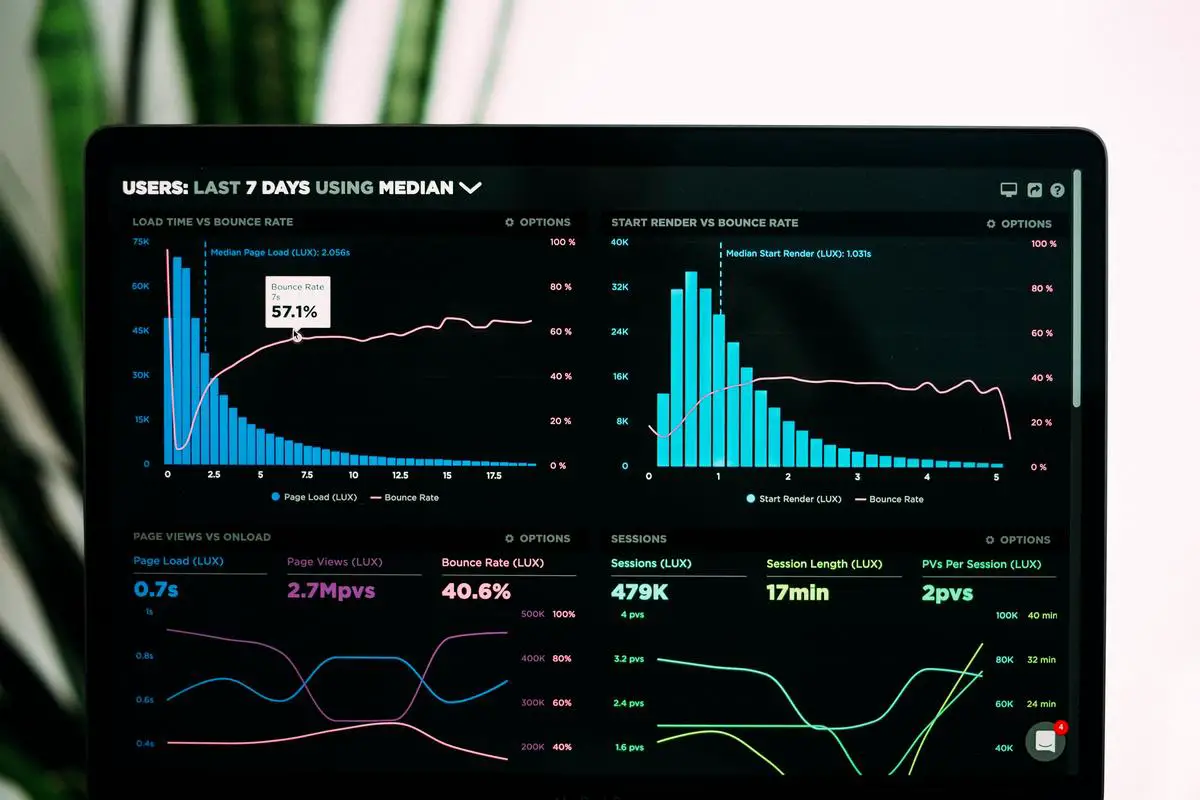As we stand at the precipice of a new era, market volatility presents both a challenge and an opportunity for investors and businesses alike. The year 2024 will be shaped not only by individual industry dynamics but also by macroeconomic factors, such as trade trends, global geopolitical pressures, and interest rates. These, in conjunction with the employment landscape and innovative technological developments, hold significant implications for market trends. In this multifaceted analysis, we delve deep into these influential aspects and how they will likely drive and navigate the market’s choppy waters. We seek to provide the reader an understanding of these potential disruptions, their consequences, and more importantly, how to transform these seeming threats into viable opportunities.
2024 Macroeconomic Factors
When it comes to foreseeing market behavior, the challenge doubles, especially in an ever-changing global economic landscape. As we march toward 2024, several pivotal macroeconomic factors could potentially stoke the fires of market volatility. For those who aspire to ride the tempestuous market waves and emerge victorious, gaining insight into these elements at play becomes a business mandate.
The most conspicuous of these influencers are international trade agreements. The business world has been anything but stagnant when it comes to international relationships. Policy changes, trade agreements – or lack thereof – can fuel significantly market volatility. Constantly shifting environments can create market uncertainty, which may agitate the usual market patterns. Astute businesses should keep a sharp watch on international relationships and policy shifts, equipping themselves to pivot swiftly as needed.
In the macroeconomic theatre, one simply cannot overlook inflation’s role. Rising inflation tends to push up market interest rates, meaning higher borrowing costs for corporations. This scenario could subsequently dent investment, dampening overall economic productivity and inducing amplified market volatility. Therefore, understanding the complex dynamics of inflation can lend a remarkable edge in navigating through the choppy market waters of 2024.
Keeping an eye on the technological frontier is critical too. Increasingly, technology seems to help shape how economies perform. Artificial Intelligence, robotics, cloud computing, telecommunication advancements – all these can radically change business models, potentially creating market dislocation and subsequent volatility. For businesses that are tenacious, technology’s growing influence could offer profitable opportunities amidst the otherwise volatile marketplace.
Moreover, demographic trends, particularly the ageing populations in major economies, could pose heightened market volatility. With older populations drawing pensions, savings, or downsizing their investments, the increased movement of assets may result in market fluctuations. A discerning business would do well to invest in thorough demographic analysis to stay ahead of this trend.
The global energy landscape is also in the midst of a seismic shift. The conversation around renewable energy is gaining momentum, impacting oil and energy prices. Any sudden shifts in energy policies or substantial breakthroughs in renewable energy technology could incite further market volatility.
Lastly, political stability, or the lack thereof, plays a significant role. Geopolitical events like elections, conflicts, and transitions of power often usher in policy changes and financial uncertainty, inducing market volatility. Businesses driven by foresight would factor in such scenarios, establishing robust strategies to weather the storm.
Nimble navigation through market volatility in 2024 calls for a proactive approach. The business world rewards those who anticipate change, adapt quickly, and seize opportunities. By understanding these macroeconomic factors, businesses can best harness the dynamism of the market, turning volatility into victory. Remember, in the roller coaster of market volatility, the very fluctuations that unsettle many could be the exhilarating ride to success for the well-prepared.

Industry-Specific Factors
Over the course of any business undertaking, the ability to anticipate market trends and economic upheavals is paramount. So, how can one make these predictions when the business world seems to pivot on a dime? The answer lies within industry-specific indicators. Beyond the usual suspects of international trade agreements, inflation, technological advancements, and demographic trends among others, new titans emerge. Discover the under-the-radar indicators to successfully navigate through the economic rollercoaster.
Consumer Confidence Index (CCI)
Consumer sentiment is often an overlooked beacon in the sea of economic forecasts, yet it serves as a reliable barometer of upcoming spending patterns. In essence, when the populace is confident, their wallets open more readily. Conversely, a dipping CCI warns of constricting purse strings, guiding businesses to adjust strategies proactively.
Labor Market Trends
A healthy labor market is often synonymous with economic prosperity. Low unemployment rates and increased job postings herald flourishing industries. However, frequent job shifts and rising unemployment serve as red flags for an economic slowdown. Labor statistics are thus a vital, yet often undervalued, indicator of industry performance and economic health.
Real Estate Market
Property trends are an efficient way to gauge the economic wellness of a sector. In commercial real estate, increased sales and leases hint at business expansion, signifying industry growth. Residential real estate prices, on the other hand, can reflect disposable income levels and consumer spending.
Innovation Index
The pulse of any industry lies in its innovative trajectory. The rate of patents issued and research & development investments can predict the future dynamism of a sector. A high innovation index could signal that an industry is ripe for technological disruption, leading to strategic potential for both budding startups and established entities.
Regulatory Changes
Legislative modifications echo future shifts in industry dynamics. Regulations affecting business operations could stimulate growth or impose constraints, influencing the profitability and feasibility of businesses within an industry. Keen investors keep one eye on the regulatory horizon, leveraging policy changes to steer their strategic direction.
Economic indicators may not hold crystal balls, but they certainly light the path ahead. Understanding industry-specific indicators empowers businesses to successfully navigate market ebbs and flows, seizing strategic advantage over competitors. While economic predictions may resemble a complex puzzle, those who master this art find themselves ahead in the business game. The business landscape may be ever-evolving, but with a pulse on industry indicators, it sure is less daunting.

Photo by lukechesser on Unsplash
Implications of Market Volatility
The Implications of Market Volatility: A Call to Arms for the Farsighted Entrepreneur
In the constantly shifting world of business, the interrelated spheres of market volatility offer multiple implications for the strategic entrepreneur. Among the pivotal factors are the Consumer Confidence Index (CCI), labor market trends, real estate markets, innovation indexes, and regulatory changes. This article seeks to illuminate each factor’s impact and its potential influence on the entrepreneur’s journey.
It’s fascinating how the pulse of consumer sentiment, as reflected in the CCI, can act as a valuable barometer of market volatility. A high CCI indicates positive consumer sentiment towards the economy, often pushing entrepreneurs to risk and invest. Conversely, a low CCI may imply sluggish economic performance, steering entrepreneurs to adopt conservative strategies. Astute entrepreneurs, however, view this volatility as an opportunity, recognizing the potential to introduce innovative solutions that address prevalent consumer anxieties, thus driving their businesses to thrive even in downturns.
Similarly, labor market trends also play an instrumental role. High employment rates often correlate with increased consumer spending, invigorating business prospects. However, increased employment presents its challenges, such as wage inflation and a competitive labor market. Again, the strategic entrepreneur sees opportunity amidst challenge, leveraging technology and efficient processes to maximize productivity while minimizing labor costs.
Shifting our gaze to the real estate market, the old adage, “Location, location, location,” still holds true. Whether it’s a startup seeking its first office space, a retailer expanding its brick-and-mortar presence, or a seasoned corporation planning a new campus, real estate market trends significantly influence business decisions. Volatility in this market impacts rental and property prices, affecting the cost of business operations profoundly. Against this backdrop, entrepreneurs can turn to flexible alternatives, like co-working spaces or even remote work strategies, to safeguard their business against volatile swings in real estate pricing.
Innovation is the lifeblood of any entrepreneurial endeavor. Hence, the Innovation Index, a measure of the outcome of innovative activities within the economy, can provide useful insights. A thriving innovation environment reflects the accessibility of resources and support for entrepreneurial ventures, while a stagnant index may indicate potential barriers. Entrepreneurs can use this information to steer their businesses with an understanding of the industry’s innovative capacity.
Finally, the impact of regulatory changes cannot be understated. These changes can alter markets dramatically, affecting everything from production costs to the competitive landscape. Here lies the critical role of the entrepreneur as a policy influencer, lobbying for favorable regulations while strategically preparing their venture for potential policy shifts.
Entrepreneurship is a venture into the unknown. But understanding the implications of market volatility offers a useful roadmap. Through these factors – CCI, labor markets, real estate, innovation index, and regulatory changes – entrepreneurs can wield the power of foresight, pivoting from mere crisis response to strategic planning, and transform volatile markets into the stepping-stones of entrepreneurial success.

Mitigating Volatility Risks
Riding the Waves of Potential Volatility: Strategies for Entrepreneurs and Businesses
Successful entrepreneurs know that success lies in continued innovation, agile responses to market shifts, and most of all, navigating the tumultuous seas of potential volatility. With the seas already charted in terms of international trade agreements, inflation, technological advancements, demographic trends, the global energy landscape, and political stability, there are five more compass points that merit exploration: the Consumer Confidence Index (CCI), labor market trends, real estate markets, innovation indexes, and regulatory changes.
Firstly, let’s discuss the Consumer Confidence Index (CCI). It’s an indicator that measures the degree of optimism among consumers regarding the state of the economy. High CCI indicates consumers are spending more, which could drive the economy and indirectly support the growth of businesses. Entrepreneurs should keep this in their sights, leveraging opportunities where confidence is high and preparing for potential downturns where confidence is shaky.
Next, labor market trends. The labor market’s intricacies impact businesses of all sizes. Rising unemployment, for instance, can signal slowdowns in the economy, while low unemployment suggests an economy operating near its capacity. By keeping a sharp eye on these trends, businesses can time their hiring, expansion, or cost-cutting measures optimally.
Thirdly, the real estate market. We’re not just talking about bricks and mortar here, but about economic indicators tied to this sector. The health of the real estate market can reflect the overall health of the economy, affecting spending and investment at both the individual and business level. Transparency and prudence in relation to real estate investments can protect entrepreneurs against potential volatility.
Innovation Index, the fourth pointer, might sound like an entrepreneurs’ playground—and it is! This metric measures a country’s potential for innovation based on factors like public infrastructure, market sophistication, and human capital. As entrepreneurs build businesses capable of innovative disruption, staying abreast of these indicators offers a broader picture of where opportunities for advancement lay and where competition might be steep.
Lastly, regulatory changes. Let’s face it, these can play spoilsport. Changes in legislature, trade practices, environmental laws, or tax policies often have broad, sweeping impacts on business practices. Staying ahead of these changes, or better yet actively pushing for beneficial regulations, can equip businesses to navigate through regulatory challenges.
In conclusion, knowledge is the astrolabe of success in any business voyage. Understanding and anticipating fluctuations in these five key areas can provide the needed wisdom to steer the ship through potentially turbulent waters. The entrepreneurial journey is rarely a smooth sail, but a savvy entrepreneur knows the value of a well-navigated course.

Photo by jeremybishop on Unsplash
Opportunities amidst Volatility
Market volatility contains a secret ingredient with a significant potential to funnel into profitable opportunities. Even though sudden changes in the market may initially lead to losses for businesses, adept entrepreneurs can harness these shifts to open doors to increased returns and growth potential. Some of the key opportunities to seize during times of market instability include market diversification, cost-cutting, mergers and acquisitions, and investment in blue-chip companies.
Market diversification, a strategy that spreads investment across different sectors, allows entrepreneurs to minimize risk during periods of market volatility. By maintaining a wide-ranging portfolio across various industries, businesses can cushion themselves against any drastic downturns in a specific industry.
Cost-cutting emerges as an effective strategy during unpredictable markets. Shrewd business minds see this turbulence as a chance to trim down operational expenses and improve their overall financial health. Lean operations bolster efficiency and yield increased profits, rendering an enterprise robust enough to withstand an unpredictable market environment.
Mergers and Acquisitions (M&A) can also benefit from market volatility. With an increased likelihood of companies facing financial struggles during such periods, there’s an opportunity for healthier businesses to make strategic purchases or mergers, effectively increasing their market share.
Lastly, market volatility often leads to lower prices for blue-chip companies; businesses with a reputation for quality, reliability, and capability to operate profitably in various economic conditions. Purchasing shares in these firms at lower prices can considerably maximize future returns when the market stabilizes.
Therefore, while on the surface, market volatility can seem intimidating, with the right mindset and strategic decision-making, it can evolve into a catalyst for growth and prosperity. In these uncertain times, the adage rings true – those who dare, win. Every high and low, every shift and change, could just be the next big opportunity for the business-savvy entrepreneur.

Indeed, the winds of change bring with them the stormy seas of market volatility. But as we navigate these waters, having deciphered the macroeconomic indicators and industry-specific triggers, we’re better prepared to weather the storm. Further, understanding the potential impacts of market turbulence allows for strategic risk management, optimisation of investment strategies, and capitalisation on profit-making openings. Learning to mitigate against the storm before it arrives, we have furnished the reader with preventive strategies that can brace his/her financial sails against market jitters. Amidst the tempest, it is beneficial to remember that the rough waves may uncover hidden treasures- undervalued assets, market inefficiencies, and innovative frontiers – these are the opportunities that volatility unravels for the discerning investor or business. Above all, 2024 is not just about survival, but about using the rollercoaster ride to one’s advantage.

